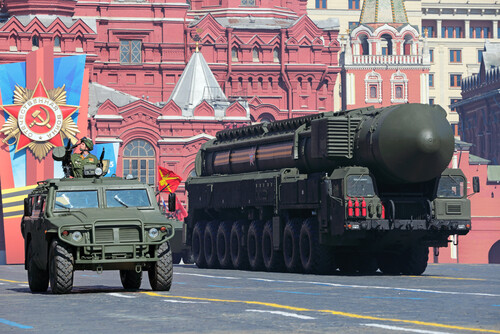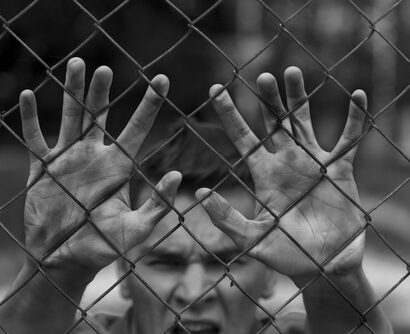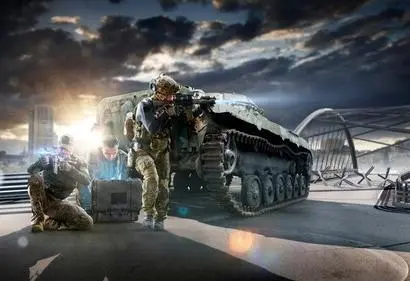Abstract: Russian President Vladimir Putin’s recent reiteration of the possibility of Russian nuclear weapon deployment has intensified concerns, particularly in the context of the ongoing conflict resulting from Russia’s full-scale invasion of Ukraine over two years ago and the West’s sustained support in question. This article aims to comprehensively analyse Russia’s nuclear threat by examining it through rhetorical, discoursal, strategic, and legalistic lenses. Central to Russia’s nuclear strategy is its narrative construction, which serves to blackmail adversaries, induce strategic paralysis, and grant Moscow a degree of impunity in its actions. In response to this challenge, the NATO Alliance must deconstruct these narratives and recalibrate its strategy in support of Ukraine, reducing its susceptibility to the guise of Russian nuclear escalation.
Problem statement: How to better understand the actual implications behind Russia’s nuclear rhetoric?
So what?: Under the current context, the NATO Alliance should view Russia’s nuclear threats as empty, enabling NATO to take a more firm response in supporting Ukraine without the risk of nuclear escalation. In addition, the Alliance should continuously work to deconstruct Russian nuclear signals and counter its propagated deterrence narratives.

Unpacking Russia’s Supposed ‘Escalate-to-Deescalate’ Strategy in Ukraine
In response to French President Macron’s statements that he would not rule out sending troops to Ukraine,[1] Putin said in a speech to the Federal Assembly of Russia on February 29, 2024, “There has been talk of sending NATO contingents to Ukraine. But we remember the fate of those who sent contingents [in the past]. Now the consequences for the interventionists will be much more tragic.” He continued, “We too have weapons that can hit targets on their territory. This really threatens a conflict with nuclear weapons, and thus the destruction of civilisation.”[2]
The concern for nuclear escalation underscores NATO’s relationship with Russia. In Ukraine, as Putin’s military-political goals have progressively become unaligned with his strategic military goals through their poor and/or insufficient performance on the battlefield, as a CSIS report finds, Russia has increased its nuclear rhetoric in the face of political and military setbacks.[3] In Putin’s speech on September 21, 2022, he said: “In the event of a threat to the territorial integrity of our country and to defend Russia and our people, we will certainly make use of all weapon systems available to us. This is not a bluff.”[4] What has been coined “escalate-to-deescalate,” at the centre of Russia’s military strategy, is nuclear threats. However, the coining and propagation of the “escalate-to-deescalate” strategy is Russia’s nuclear strategy, as the “escalate-to-deescalate” strategy has not been seen in practice. More precisely, Russia makes nuclear threats to blackmail its adversaries through extreme intimidation with the vague notion that, if it comes to it, limited nuclear use could be deployed to create a future favourable to Moscow.[5]
The coining and propagation of the “escalate-to-deescalate” strategy is Russia’s nuclear strategy, as the “escalate-to-deescalate” strategy has not been seen in practice.
This rhetorical deterrence strategy is historically effective, as Russia purposely holds ambiguous red lines to deter Western objectives.[6] This strategic ambiguity creates constant risk in dealing with Russia. Regardless of the variables in policy, there is never a nonzero chance of Putin ordering a tactical nuclear weapon against an unaligned country like Ukraine.[7] The increase in nuclear rhetoric since the full-scale invasion in 2022[8] is Russia’s intention to intimidate the Western public and, in the best-case scenario, create a Western strategic paralysis towards any viable policy solutions.[9]
Analysing a Path Through Existential Threats
Putin is seeking a way out of the conflict in Ukraine that is not a complete strategic failure. Given his stated goals of Ukrainian regime change and neutral status,[10] a Ukraine in NATO would be. The paradox is how to counter an unreliable actor whose stated goals may differ from their actual goals, as such, it is necessary to determine, with the spectrum of possible goals, the red lines that would entail the actual deployment of nuclear weapons beyond the rhetoric of strategic ambiguity. Russia’s past nuclear intentions have been purely deterrent. To “wield the threat,” while never actually deploying it, and in the end “compelling the adversary to concede,” leaving the geopolitical scenario in a pace for a better-determined Russian outcome of victory. Russia’s ideal outcome in this conflict, and in much of its global posture, is to increase its facade of strength and appear as a comparable threat to the United States.[11] The feared but slightly possible worst-case scenario is Russia conducting a “demonstration strike” with a limited-capacity tactical nuclear weapon.[12]
Russia’s official nuclear doctrine, as modified in 2020, states that nuclear weapons can be deployed if either an adversary has used a form of weapons of mass destruction (WMD) or if there is “aggression against the Russian Federation with the use of conventional weapons when the very existence of the state is in jeopardy.”[13] This legal basis is quite limited, so it does not match Putin’s rhetoric. To expand its application, Putin has raised the perception of what is “existential” for Russia. Steps taken to do so include the assertion that the U.S. is propping up an “anti-Russia” rhetoric and that Ukraine is developing WMDs.[14] Both of these, despite the lack of a viable military threat to Russia, turn the condition of Ukraine, regardless of NATO, into an existential threat to Russia.[15] This leads many, such as Mark Galeotti, to believe Russia’s use of nuclear weapons would be a “wholly political move by Putin.”[16]
Putin has raised the perception of what is “existential” for Russia.
The recent iterations of Russia’s nuclear doctrine, both the current and those that followed in 2014, have modified the ambiguous rhetoric for usage but have not directly lowered the threshold. Olga Oliker and Andrey Baklitsky believe those within Russia who advocated for lowering the bar for use lost the internal debate and instead were left only to publish articles externally to the Kremlin.[17] Regardless, in attempting to comprehend Russia’s nuclear threat, the legal basis or the justifications that govern Russia’s authoritarian rogue condition are less beneficial to the conversation as to determining its calculus for the actualisation of nuclear use. More importantly, it defines the various strategic factors for or against using nuclear weapons.
Reasons or situations in which Russia could view nuclear weapons as a viable strategic choice:
- Russia could believe the actual execution of the escalate-deescalate strategy could end the current conflict or freeze the external incorporation of Ukraine into the West. The end state is an armistice or ceasefire on Russian terms vis-à-vis Russian control over the association of Ukraine;[18]
- Russia’s military command may believe, as evident in Chechnya, Syria, and Ukraine, that raising the scale of brutality will favour Russia’s objectives;[19]
- Putin may believe the hold over Ukraine to be existential to his ability to maintain control over Russia;[20]
- Putin could believe that it would shatter the unity of the NATO Alliance;[21]
- Russia may also choose to escalate as a ‘last resort’ to capitulation on the battlefield; [22] and
- Putin, in fear of NATO intervention, could go rogue and override the defence ministry and authorise nuclear use.[23]
Factors against Russia’s nuclear use:
- The U.S. and much of the Alliance have messaged that it would be catastrophic for Russia, almost “suicidal,” to use nuclear weapons.[24] In private conversations, Russian generals emphasise that escalation could draw in NATO, which risks a rapid, all-destroying nuclear war that must be avoided;[25]
- Many military strategists suggest that a tactical nuclear weapon would still only enable limited gains in Ukraine for Russia;[26]
- The radiation would affect Russian troops and could move into Russia as well;[27]
- Using a tactical nuclear weapon could ostracise Moscow from its only allies, most importantly the People’s Republic of China, which likely holds this as a red line;[28], [29] and
- Nuclear weapons would likely act contrary to Russia’s doctrine of deterrence, losing any image it held for reliability on the world stage.[30]
Feared Mutual Destruction
Russia’s use of nuclear weapons under any calculus would be self-inhibiting. It would either lead towards the possibility of mutual destruction with the U.S., depending on the political and strategic thinking of the Administration at the time, or ruin its nuclear framework as a structure for deterrence. As is, Russia’s nuclear threats ensure it can operate in a grey-zone space of conflict against the West without escalating a Western response. The global consequences would be “disproportionate to Putin’s political goals in the war against Ukraine.”[31] Despite its revisionism, Russia has been a stable and consistent advocate for non-proliferation and has self-declared itself to the global south as a “guarantor of global stability.” This reputation and means for alliance building would be left unrepairable.[32]
Russia’s nuclear threats ensure it can operate in a grey-zone space of conflict against the West without escalating a Western response.
No matter the analysis, the risk will never be zero. Russia holds a vast stockpile of non-strategic nuclear weapons, with some believing they hold them for the possibility of use, and they are developing new systems for nuclear deployment alongside hypersonics.[33] On the day that Russia invaded Ukraine, Putin placed the deterrent forces, including nuclear weapons, on a “special regime of alert.” Shortly after, the military conducted military exercises involving nuclear submarines.[34] Combined with the strategic foundation for contemporary Russian nuclear escalation dating from a 1999 paper from the Russian military journal Voennaia Mysl, which advocated for the strategic value of deploying nuclear weapons to demonstrate credibility and convince the adversary to stand down for fear of further escalation, the latest actions have placed many analysts on high alert for Russian nuclear deployment.[35]
Still, overall, the risk of use is low. Much of the rhetoric for nuclear escalation by Putin or Shoigu has been purposely ambiguous, often hinting at nuclear deployment but actually relating to more conventional forms of escalation, such as increasing military personnel. Many Russian officials continuously attempt to roll back their comments along with Lavrov’s.[36] Most importantly, the nuclear exercises from the Russian military in rhetoric are for ‘nuclear readiness.’ Still, in actuality, they do not fit the scenarios for a nuclear strike and do not hold those components on alert when simulating a conflict with NATO.[37]
Losing War with NATO
While many analysts see the agreement for an incorporation plan for Ukraine into NATO or involving NATO command in the current conflict as escalatory,[38] Putin is well aware that an advance on NATO, especially a nuclear strike, would result in an “instant losing war with NATO.”[39] Despite the break in norms in this conflict, the war does confirm, based on Russia’s behaviour, that the “stability-instability paradox” based on nuclear balance is still effective.[40] What Moscow prefers and is currently executing is the implementation and development of dual-capable systems to keep the West at bay.[41] How nuclear threats by Russia should be understood is best described by Zelenskyy: “It won’t change the outcome of this war. I think that is the way you diminish the currency of nuclear blackmail: by taking away its political cache. We can do that without direct involvement.”[42]
Despite the break in norms in this conflict, the war does confirm, based on Russia’s behaviour, that the “stability-instability paradox” based on nuclear balance is still effective.
The NATO Alliance should not only follow the words of Zelenskyy, but of U.S. Secretary of Defense Lloyd Austin, who stated in a December 2023 speech, “If we do not stand up to the Kremlin’s aggression today, if we do not deter other would-be aggressors, we will only invite more aggression, more bloodshed and more chaos.”[43]
Samuel Dempsey’s experience spans across the U.S. government (Department of State, Congress, and International Trade Administration) and think tanks across Europe. He is currently an incoming U.S. 2023 Presidential Management Fellow at the U.S. Department of State and the Director of Policy at European Horizons. Samuel holds an M.A. in Geopolitics and Strategic Studies and a B.A. in Journalism and Communications, which he obtained respectively in Spain and the Czech Republic. His research focuses on the transatlantic relationship, the challenges it must confront in the context of rising multipolarity, and the outlook for modern reforms to interregional cooperation. The views contained in this article are the author’s alone and do not represent the views of any of his affiliations.
[1] Patrick Wintour, “Macron Refuses to Rule out Putting Troops on Ground in Ukraine in Call to Galvanise Europe,” The Guardian, February 27, 2024, https://www.theguardian.com/world/2024/feb/27/french-president-emmanuel-macron-ukraine-french-ground-troops.
[2] “Как Проходило Послание Владимира Путина Федеральному Собранию,” TACC, February 29, 2024, https://tass.ru/politika/20103903.
[3] Heather Williams et al., “Russian Nuclear Calibration in the War in Ukraine,” CSIS, February 23, 2024, https://www.csis.org/analysis/russian-nuclear-calibration-war-ukraine.
[4] Mary Glantz and Mona Yacoubian, “Is Russia Escalating to De-Escalate?,” United States Institute of Peace, October 05, 2022, https://www.usip.org/publications/2022/10/russia-escalating-de-escalate.
[5] Nancy Messieh, “Memo to the President: How to Deter Russian Nuclear Use in Ukraine-and Respond If Deterrence Fails,” Atlantic Council, September 23, 2022. https://www.atlanticcouncil.org/content-series/memo-to-the-president/memo-to-the-president-how-to-deter-russian-nuclear-use-in-ukraine-and-respond-if-deterrence-fails/; Horovitz, Liviu, and Lydia Wachs. “Russia’s Nuclear Threats in the War against Ukraine.” Stiftung Wissenschaft und Politik (SWP), April 20, 2022. https://www.swp-berlin.org/10.18449/2022C29/.
[6] Liviu Horovitz and Lydia Wachs, “Russia’s Nuclear Threats in the War against Ukraine.”
[7] Nancy Messieh, “Memo to the President: How to Deter Russian Nuclear Use in Ukraine-and Respond If Deterrence Fails.”
[8] Claire Mills, Russia’s use of nuclear threats during the Ukraine conflict, February 28, 2024, https://commonslibrary.parliament.uk/research-briefings/cbp-9825.
[9] Liviu Horovitz and Lydia Wachs, “Russia’s Nuclear Threats in the War against Ukraine.”
[10] Harriet Morris, “An Emboldened, Confident Putin Says There Will Be No Peace in Ukraine until Russia’s Goals Are Met,” AP News, December 14, 2023, https://apnews.com/article/putin-russia-press-conference-moscow-ukraine-ef4e88fda50e6ad75b8a1979b95d9fcc.
[11] Mary Glantz and Mona Yacoubian, “Is Russia Escalating to De-Escalate?,” United States Institute of Peace, October 05, 2022, https://www.usip.org/publications/2022/10/russia-escalating-de-escalate.
[12] Idem.
[13] CNA Russia Studies Program, “Foundations of State Policy of the Russian Federation in the Area of Nuclear Deterrence,” CNA, June 04, 2020, https://www.cna.org/reports/2020/06/state-policy-of-russia-toward-nuclear-deterrence; Oliker, Olga, and Andrey Baklitsky . “The Nuclear Posture Review and Russian ‘De-Escalation:’ a Dangerous Solution to a Nonexistent Problem,” War on the Rocks, February 19, 2018, https://warontherocks.com/2018/02/nuclear-posture-review-russian-de-escalation-dangerous-solution-nonexistent-problem/.
[14] Simon Lewis, Jonathan Landay, and Humeyra Pamuk, “U.N. Says No Evidence to Back Russian Claim of Ukraine Biological Weapons Program,” Reuters, March 11, 2022, https://www.reuters.com/world/un-says-not-aware-any-biological-weapons-program-ukraine-2022-03-11/.
[15] Liviu Horovitz and Lydia Wachs, “Russia’s Nuclear Threats in the War against Ukraine,” Stiftung Wissenschaft und Politik (SWP), April 20, 2022, https://www.swp-berlin.org/10.18449/2022C29/.
[16] Mark Galeotti, “Putin’s Nuclear Doctrine Has Been Revealed,” The Spectator, February 29, 2024, https://www.spectator.co.uk/article/putin-holds-the-power-to-trigger-nuclear-war/.
[17] Olga Oliker and Andrey Baklitsky, “The Nuclear Posture Review and Russian ‘De-Escalation:’ a Dangerous Solution to a Nonexistent Problem.”
[18] Idem.
[19] Idem.
[20] Idem.
[21] Idem.
[22] Samuel Charap and Miranda Priebe, “Don’t Rule out Diplomacy in Ukraine,” Foreign Affairs, November 22, 2022, https://www.foreignaffairs.com/ukraine/dont-rule-out-diplomacy-ukraine.
[23] Tom Nichols, “Only NATO Can Save Putin,” The Atlantic (Atlantic Media Company, March 17, 2022), https://www.theatlantic.com/ideas/archive/2022/03/putin-war-nato-intervention/627092/.
[24] Mary Glantz and Mona Yacoubian, “Is Russia Escalating to De-Escalate?.”
[25] Olga Oliker and Andrey Baklitsky, “The Nuclear Posture Review and Russian ‘De-Escalation:’ a Dangerous Solution to a Nonexistent Problem.”
[26] Mary Glantz and Mona Yacoubian, “Is Russia Escalating to De-Escalate?.”
[27] Hans Binnendijk, Alexander Vershbow, and Julian Lindley-French, “Putin’s next Escalation Is Coming. How Should the West Respond?,” Atlantic Council, October 28, 2022, https://www.atlanticcouncil.org/blogs/new-atlanticist/putins-next-escalation-is-coming-how-should-the-west-respond/.
[28] This ostracization references to Russia’s preferred revisionist allies, such as in the BRICS alliance, not less preferred rogue pariah state powers such as North Korea or Iran.
[29] Hans Binnendijk, Alexander Vershbow, and Julian Lindley-French, “Putin’s next Escalation Is Coming. How Should the West Respond?.”
[30] Olga Oliker and Andrey Baklitsky, “The Nuclear Posture Review and Russian ‘De-Escalation:’ a Dangerous Solution to a Nonexistent Problem.”
[31] Liviu Horovitz and Lydia Wachs, “Russia’s Nuclear Threats in the War against Ukraine,” Stiftung Wissenschaft und Politik (SWP), April 20, 2022, https://www.swp-berlin.org/10.18449/2022C29/.
[32] Idem.
[33] Olga Oliker and Andrey Baklitsky, “The Nuclear Posture Review and Russian ‘De-Escalation:’ a Dangerous Solution to a Nonexistent Problem.”
[34] Liviu Horovitz and Lydia Wachs, “Russia’s Nuclear Threats in the War against Ukraine,” Stiftung Wissenschaft und Politik (SWP), April 20, 2022, https://www.swp-berlin.org/10.18449/2022C29/.
[35] Olga Oliker and Andrey Baklitsky, “The Nuclear Posture Review and Russian ‘De-Escalation:’ a Dangerous Solution to a Nonexistent Problem.”
[36] Liviu Horovitz and Lydia Wachs, “Russia’s Nuclear Threats in the War against Ukraine,” Stiftung Wissenschaft und Politik (SWP), April 20, 2022, https://www.swp-berlin.org/10.18449/2022C29/.
[37] Olga Oliker and Andrey Baklitsky, “The Nuclear Posture Review and Russian ‘De-Escalation:’ a Dangerous Solution to a Nonexistent Problem.”
[38] Hans Binnendijk, Alexander Vershbow, and Julian Lindley-French, “Putin’s next Escalation Is Coming. How Should the West Respond?,” Atlantic Council, October 28, 2022, https://www.atlanticcouncil.org/blogs/new-atlanticist/putins-next-escalation-is-coming-how-should-the-west-respond/.
[39] Hans Binnendijk, Alexander Vershbow, and Julian Lindley-French, “Putin’s next Escalation Is Coming. How Should the West Respond?.”
[40] Liviu Horovitz and Lydia Wachs, “Russia’s Nuclear Threats in the War against Ukraine,” Stiftung Wissenschaft und Politik (SWP), April 20, 2022, https://www.swp-berlin.org/10.18449/2022C29/.
[41] Olga Oliker and Andrey Baklitsky, “The Nuclear Posture Review and Russian ‘De-Escalation:’ a Dangerous Solution to a Nonexistent Problem.”
[42] Michael Mazarr et al., “Can Russia’s War in Ukraine End without Nuclear Weapons?,” Carnegie Endowment for International Peace, November 03, 2022, https://carnegieendowment.org/2022/11/03/can-russia-s-war-in-ukraine-end-without-nuclear-weapons-pub-88321.
[43] David Vergun, “U.S. Support for Ukraine ‘Unshakable,’ Says Austin,” U.S. Department of Defense, December 11, 2023, https://www.defense.gov/News/News-Stories/Article/Article/3613826/us-support-fo r-ukraine-unshakable-says-austin/.





